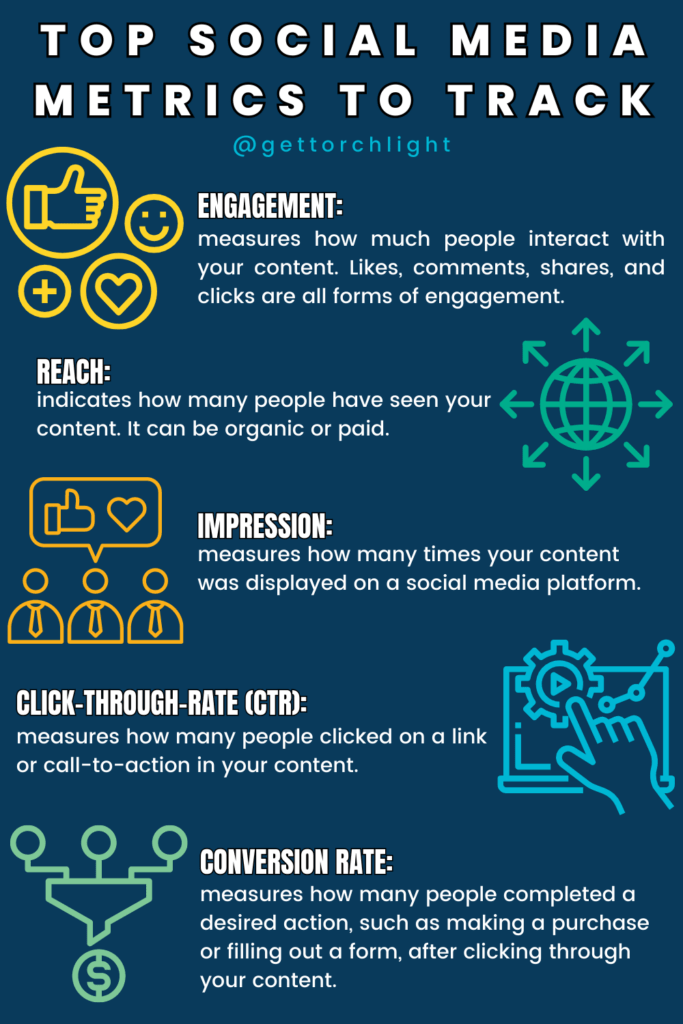Well, well, well. We have finally made it to the final installment of our Reputation Management series where we deep dive into the three “wheels” of this marketing concept: listings, review sites, and today, social media.
As we’ve discussed before, Reputation Management is one of Torchlight Marketing’s core services that goes hand-in-hand with SEO, and these three wheels work in conjunction to help you build authority, trust and familiarity both with your customers and with Google.
In our previous deep dives, we’ve been over building authority through listings and building trust through review sites– today we’re going to focus on building familiarity through social media.
Social media has become an integral part of our daily lives (Yes we still need to say this, there are still some hold-outs!). It connects people, shares information, and influences decision-making. For businesses, social media holds immense potential for enhancing SEO and building familiarity with customers.
Let’s dive in!
Social Media’s Impact on SEO
Social Signals
Social media engagement and interaction play a crucial role in determining your brand’s social presence and giving the opportunity to build familiarity. Likes, shares, comments, and overall engagement on social media platforms contribute to a positive perception of your content; people share great content which creates more links to your social media presence potentially improving search rankings. The more engagement there is with your content, the more users will not only recognize your brand but it will also improve your presence on that particular social media platform. It’s important to note that while social signals have a relationship with organic rankings, they do not directly influence those rankings.
The ultimate goal of any SEO tactic is to drive traffic to your site and increase profits. A strong and successful social media presence has the exact same goal. While “viral” content won’t directly move your website up multiple spots in organic search rankings, it can aid in the popularity of your social media profiles (which *should* have a link to your website) and direct users to your site.
Increased Brand Visibility & Website Traffic
Social media platforms also provide an excellent opportunity to share and promote your content, driving traffic to your website. When you share blog posts, product updates, or any valuable content, you increase the chances of it being discovered and shared by your followers. This amplification effect expands your brand’s visibility across different networks and exposes your business to a wider audience.
Furthermore, having an active social media presence increases the likelihood of your social profiles appearing in search results. This added visibility not only reinforces your brand’s online presence but also contributes to higher website traffic. Increased traffic indicates to search engines that your website is relevant and valuable, potentially improving its search rankings.
Because social media “branches out” from listings, all social media profiles provide high-value listings for your business. For example, on a business Facebook page you are able to input your business’s address, phone number, operating hours, etc. As always, you want to ensure that all of this information is correct and accurate across all of your businesses’ internet listings.
Building Familiarity with Customers
In addition to its impact on SEO, social media plays a vital role in building familiarity and rapport with your customers. Here’s how it accomplishes that:
Establishing a Strong Brand Presence
Consistency in brand voice, messaging, and visual identity across social media platforms creates a recognizable and memorable brand identity. When customers encounter your brand on various social channels and find consistent messaging, it reinforces your brand’s credibility and builds trust.
By sharing content that aligns with your brand values, you can shape the perception of your business among customers. Whether it’s educational articles, inspiring stories, or behind-the-scenes glimpses, social media provides a platform to showcase your brand’s personality, values, and expertise.
Engaging with Your Target Audience
Social media allows for direct, two-way communication with your customers, fostering engagement and building relationships. When customers reach out with questions, comments, or concerns, responding promptly and thoughtfully shows that you value their input and are dedicated to providing excellent customer service.
Active engagement with your audience on social media also enables you to gain valuable insights into their preferences, needs, and pain points. By listening to their feedback, addressing their concerns, and incorporating their suggestions, you can build stronger relationships and improve your products or services.
Best Practices for Using Social Media
1. Choosing the right social media channels:
Understanding the demographics, preferences, and behaviors of your target audience is crucial for selecting the most relevant social media platforms. Research which platforms align with your audience’s interests, and focus your efforts on building a strong presence on those platforms.
Consider the strengths and features of different platforms as well. For example, LinkedIn may be more suitable for professionals and B2B businesses, while Instagram may work better for visually appealing products or lifestyle brands. While every social media platform has their own preference on which type of content tends to perform better, each social media platform is a “listing” in and of itself. Because of this, it’s important to be present and establish a profile on each of the most popular types of social media channels.
Some of the platforms that are the most valuable in this aspect are Facebook, Instagram, LinkedIn, Google Business Profile, and Twitter.
2. Creating compelling content:
Identify the type of content that resonates with your audience. Conduct market research to understand their interests, pain points, and the kind of content they find valuable. Whether it’s informative articles, entertaining videos, captivating visuals, or interactive polls, tailor your content to meet their needs.
Utilize the power of visual media, including images, videos, infographics, and animations, to enhance engagement and grab the attention of your audience. Visual content tends to be more shareable and memorable, increasing the likelihood of it being spread across social networks.
Currently, short-form content has proven to be highly sought after from the social media algorithm standpoint– see how you can utilize short videos and other concepts into your strategy!
3. Consistency and frequency of posting:
Develop a social media content calendar to ensure a consistent posting schedule. Consistency is key in maintaining an active and engaging presence on social media. Determine the optimal posting frequency for each platform, considering your audience’s behavior and platform algorithms.
However, it’s essential to find the balance between regular updates and overwhelming your audience. As with many aspects of digital marketing, quality is better than quantity. Ensure that each post provides value and resonates with your audience, rather than simply posting for the sake of it.
4. Social media analytics and monitoring:
Utilize analytics tools provided by social media platforms to track key metrics such as engagement, reach, click-through rates, and conversions. These insights will help you understand the performance of your social media efforts and identify areas for improvement.
Additionally, monitor brand mentions and customer sentiment across social media channels. Pay attention to both positive and negative feedback, addressing customer concerns promptly and publicly whenever possible. Reputation management is crucial for maintaining a positive brand image and building trust with your audience.
Takeaway
Social media has become an indispensable tool for businesses in today’s digital landscape. By harnessing the power of social media, businesses can enhance their SEO performance, increase brand visibility, and build familiarity with their customers. While social media platforms are just one piece to the digital marketing puzzle, you should embrace it as a powerful tool, and leverage its capabilities to propel your business towards success in the digital era.
If you’re hungry for more, be sure to check out our deep dives in our SEO series, where we examine the depths of website structure, content, backlinks and technology!
To learn even more about our services contact us on our website or give us a call at (805) 481-0118.



